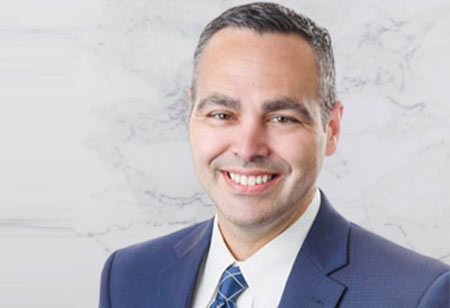Thank you for Subscribing to Healthcare Business Review Weekly Brief

Algorithms Augmenting Risk Detection and Patient Outcomes
Healthcare Business Review
Sepsis, the body’s overwhelming and life-threatening response to infection, is deadlier than breast cancer, prostate cancer, and AIDS combined, with more than 1.7 million adults in the U.S. developing it each year and 350,000 people dying as a result. It is the leading cause of death in U.S. hospitals and the number one cause of hospital readmissions.
Early and aggressive treatment of sepsis boosts the chances of survival. However, the challenge until now has been that sepsis is hard to recognize in its early stages because the symptoms, which include fever, chills, rapid heartbeat, clammy or sweaty skin, extreme pain or discomfort, difficulty breathing, and confusion or disorientation, are similar to other conditions. A patient can go from near normal to near death in a matter of minutes.
But data gathered from thousands of patient records and predictive analytics give clinicians the timely insights required to identify sepsis faster.
Led by our parent company HCA Healthcare, one of the nation’s leading providers of healthcare services with 182 hospitals, Medical City Healthcare hospitals in North Texas are deploying artificial intelligence and machine learning to identify sepsis cases about six hours earlier than the best clinicians.
The algorithm, called Sepsis Prediction and Optimization of Therapy (SPOT), is built into patients’ electronic medical records and monitors vital signs, labs, nursing reports, and other data. When SPOT detects even a subtle change in a patient’s condition, the program alerts trained technicians, who then instantly notify the patient’s care team. SPOT monitors every patient in our hospitals 24 hours a day, 7 days a week, 365 days a year.
Successful treatment for sepsis is timely recognition and prompt use of antibiotics and IV fluids. Early recognition and treatment have reduced sepsis mortality across 160 hospitals by almost 30%.
SPOT recently helped a surgery patient at Medical City Plano avoid the ICU. After a positive SPOT alert, a follow-up screen on the patient confirmed sepsis. The care team immediately began treatment, and the patient was able to be discharged after recovery.
Sepsis, which can lead to tissue damage, organ failure, and death, often is linked to bacterial infections, including infections in the lungs, urinary tract, skin, or digestive tract. As flu season approaches, know that it also is a deadly complication of the influenza virus.
Early and aggressive treatment of sepsis boosts the chances of survival
Viral infections, including the flu and COVID-19, can also lead to sepsis. In fact, the inflammatory cytokine storm that happens in severe COVID-19 is sepsis. Viral sepsis can be especially hard to treat.
Most infections that lead to sepsis start outside hospitals – 87% of cases, according to the Centers for Disease Control and Prevention. In fact, it can occur in response to any kind of infection — a wound, an illness, or even poor dental care.
Previously, our nurses manually monitored our patients for sepsis. Patients can become septic at any time, but since it’s not realistic to monitor every patient 24/7, nurses check for sepsis during shift changes. They used a checklist to look for certain criteria, such as lactate value and blood pressure.
But often, it was different clinicians doing the checks and noticing different issues at different times, so it was difficult to see the full picture of symptom changes indicating the patient was becoming septic. With SPOT, the machine algorithm is continuously monitoring, saving time and lives. It also integrates intelligence into workflows. SPOT doesn’t create new workflows or disrupt existing processes – it merely enhances the current workflow.
When the algorithm identifies sepsis risk for a patient, the same next steps occur. It just happens that the algorithm is better and faster at spotting those risks than a human is – which leads to better patient outcomes.









